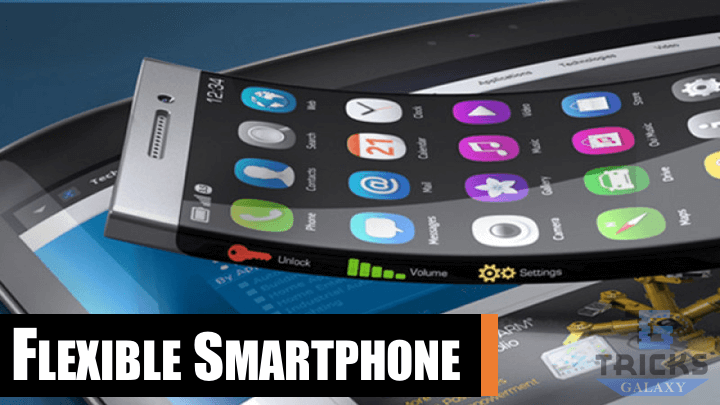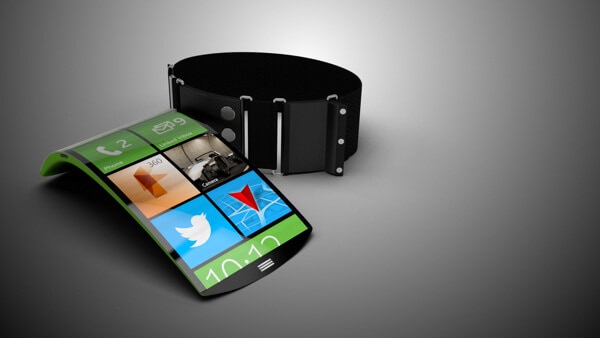Producers of smartphones one by one show their developments in the field of flexible mobile devices. Let’s figure out why they are needed, what they can do, and how they are made.
Representatives of Flexible Devices
This autumn turned out to be productive for new prototypes of unusual smartphones. In October, a new flexible smartphone Xiaomi came out. It has an unusual form of the screen that does not prevent the user from deftly swiping and navigating through applications.
A new patent of Apple also looks very interesting. The documentation describes the device, reminiscent of something from the past – either a book or a clamshell phone, bent in the middle. In the Cupertino, since 2013, there is a patent for another interesting folding device, which means that the company is increasingly working in this direction.

Samsung is not far behind from Apple. Trying to forget about the fiasco with Galaxy Note 7, the Korean company published a patent for a smartphone, probably related to the secret project – Project Valley. A detailed description and a well-designed render of the model give a clearer idea of the device.
In the summer of 2016, Lenovo demonstrated a smartphone that you can wrap around your wrist like a bracelet. The same presentation showed a new tablet, folded in half – in this state, it turns into a full-fledged smartphone.
Why You Need a Bent Smartphone?
The design has many advantages. Firstly, the device folded in half is easier to carry in your pocket. Secondly, even if it does not fold, the folding device is more ergonomic.
In addition, new devices promise to be more resistant to damage. Thirdly, the curved configuration is better adapted for conversations – it is more convenient to hold the device at the cheek. Fourth, the novelty definitely causes a wow effect and should attract users with its unusual look.
Is it a well-forgotten old?
Companies such as LG and Samsung have long experimented with screens of smartphones of unusual shape. Models LG G Flex and G Flex 2, as well as Samsung Galaxy Round, had curved screens, but rigid cases.
According to the statements of their owners, such devices are easier to use in one hand – holding it in the palm of your hand and moving your thumb along the arc, instead of along the plane.
If you believe the developers, the functionality of bending devices is even higher. First, a 7-inch device can easily be folded twice, which means there will be no problems to carry it in your pocket. For example, a smartphone Lenovo and can be worn at the wrist like a watch.
In addition, bending devices represent a completely new way of physical interaction with applications. Developers from the University of Queens in Belfast visually demonstrated this on the display from LG – when the smartphone bends, the screen turns over the pages, and the more you bend the device, the faster the pages are scrolled.
Whether these new functions will get accustomed and how much they will enrich the user experience will be seen later. At the moment, this is not entirely clear.
A few years ago, it was fashionable to supplement the flagship smartphone models with gesture control functions and even blows in the speaker. In fact, all this looked good only in the presentations of marketers. On modern devices, these functions look weird.
How do Folding Smartphones Work?

Over the past 10 years, engineers have more or less learned to make flexible OLED displays. LED cells are formed on the substrate of elastic plastic or flexible metal film, which are covered with a thin protective film.
According to experts’ forecasts, by 2020 the market of these displays will be estimated as much as $4 billion. But to create fully flexible smartphones, you need not only a screen, but also other parts of it – a battery, printed circuit boards, etc., and all everything has to be quite elastic.
At the moment, it is not possible to make all the components flexible. Most likely, today’s first flexible smartphones are short-lived – no one knows how many additions-decompositions they will last until the moment the cracks appear on the case, and the black bars on the screen.
Engineers are increasingly introducing carbon nanotubes into the interior of the smartphone – their structure resembles a microscopic sheet of wire mesh folded into a cylinder.
Such material is built in both conductors and accumulators. Based on this technology, Apple is developing its device. The patent documentation states that internal structures consist of carbon nanotubes that form flexible and crack-resistant conductors, printed circuit boards, antennas, and other electrical components.
What About Battery in Flexible Smartphone?
One of the main stumbling blocks in creating flexible mobile devices is the battery. It is known what can happen if you bend an ordinary battery – the integrity of a thin dielectric plate between the cathode and the anode can be disrupted and there may be an explosion. But manufacturers are looking for a way out.
Panasonic introduced a flexible lithium-ion battery, a thickness of 0.55 mm. The twisting angle is not very impressive yet (only 25 degrees in each direction), but this deformation does not affect the current yield and charge of the element.
The battery cannot boast of capacity either – only 17.5 mAh in comparison, for example, with the 1,960 mAh battery of the iPhone 7. This type of battery will be used in devices with low current consumption.
When Flexible Phones will be Available
As reported by Business Insider, the smartphone with the code name Project Valley is being prepared in two versions – one with a Snapdragon 620 processor and the other one with a faster Snapdragon 820. It is also known for support of microSD memory cards and 3GB of RAM.
There was conducted a questionnaire where customers were asked to answer multiple choice questions about whether or not they would prefer to use flexible smartphones. It turned out that many respondents would not mind investing money in such devices only if they are really of a high quality.

